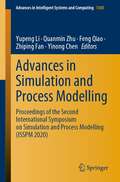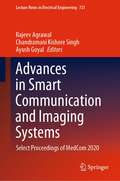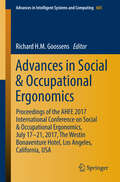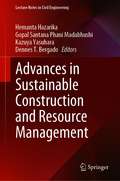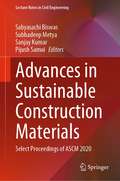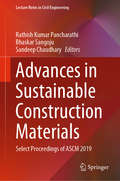- Table View
- List View
Advances in Pattern Recognition - ICAPR 2001: Second International Conference Rio de Janeiro, Brazil, March 11-14, 2001 Proceedings (Lecture Notes in Computer Science #2013)
by Sameer Singh Nabeel Murshed Walter KropatschThe paper is organized as follows: In section 2, we describe the no- orientation-discontinuity interfering model based on a Gaussian stochastic model in analyzing the properties of the interfering strokes. In section 3, we describe the improved canny edge detector with an ed- orientation constraint to detect the edges and recover the weak ones of the foreground words and characters; In section 4, we illustrate, discuss and evaluate the experimental results of the proposed method, demonstrating that our algorithm significantly improves the segmentation quality; Section 5 concludes this paper. 2. The norm-orientation-discontinuity interfering stroke model Figure 2 shows three typical samples of original image segments from the original documents and their magnitude of the detected edges respectively. The magnitude of the gradient is converted into the gray level value. The darker the edge is, the larger is the gradient magnitude. It is obvious that the topmost strong edges correspond to foreground edges. It should be noted that, while usually, the foreground writing appears darker than the background image, as shown in sample image Figure 2(a), there are cases where the foreground and background have similar intensities as shown in Figure 2(b), or worst still, the background is more prominent than the foreground as in Figure 2(c). So using only the intensity value is not enough to differentiate the foreground from the background. (a) (b) (c) (d) (e) (f)
Advances in Photometric 3D-Reconstruction (Advances in Computer Vision and Pattern Recognition)
by Jean-Denis Durou Maurizio Falcone Yvain Quéau Silvia TozzaThis book presents the latest advances in photometric 3D reconstruction. It provides the reader with an overview of the state of the art in the field, and of the latest research into both the theoretical foundations of photometric 3D reconstruction and its practical application in several fields (including security, medicine, cultural heritage and archiving, and engineering). These techniques play a crucial role within such emerging technologies as 3D printing, since they permit the direct conversion of an image into a solid object. The book covers both theoretical analysis and real-world applications, highlighting the importance of deepening interdisciplinary skills, and as such will be of interest to both academic researchers and practitioners from the computer vision and mathematical 3D modeling communities, as well as engineers involved in 3D printing. No prior background is required beyond a general knowledge of classical computer vision models, numerical methods for optimization, and partial differential equations.
Advances in Physical Agents: Proceedings of the 19th International Workshop of Physical Agents (WAF 2018), November 22-23, 2018, Madrid, Spain (Advances in Intelligent Systems and Computing #855)
by Raquel Fuentetaja Pizán Ángel García Olaya Maria Paz Sesmero Lorente Jose Antonio Iglesias Martínez Agapito Ledezma EspinoThe book reports on cutting-edge theories and methods aimed at the control and coordination of agents acting and moving in a dynamic environment. It covers a wide range of systems, including multiagent systems, domotic agents, robotic manipulators, soccer robots, autonomous and semiautonomous robots, as well as systems for industrial applications. Advances in software agents, sensors, computer visions and other related areas are also thoroughly discussed and presented in detail. Based on the 19th edition of the International Workshop of Physical Agents (WAF 2018), held on November 22-23, 2018, in Madrid, Spain, this book offers a snapshot of the state-of-the-art in the field of physical agents, with a special emphasis on autonomous systems such as mobile robots, industrial process or other complex systems.
Advances in Physical Agents II: Proceedings of the 21st International Workshop of Physical Agents (WAF 2020), November 19-20, 2020, Alcalá de Henares, Madrid, Spain (Advances in Intelligent Systems and Computing #1285)
by Luis M. Bergasa Manuel Ocaña Rafael Barea Elena López-Guillén Pedro RevengaThe book reports on cutting-edge Artificial Intelligence (AI) theories and methods aimed at the control and coordination of agents acting and moving in a dynamic environment. It covers a wide range of topics relating to: autonomous navigation, localization and mapping; mobile and social robots; multiagent systems; human-robot interaction; perception systems; and deep-learning techniques applied to the robotics. Based on the 21st edition of the International Workshop of Physical Agents (WAF 2020), held virtually on November 19-20, 2020, from Alcalá de Henares, Madrid, Spain, this book offers a snapshot of the state-of-the-art in the field of physical agents, with a special emphasis on novel AI techniques in perception, navigation and human robot interaction for autonomous systems.
Advances in Randomized Parallel Computing (Combinatorial Optimization #5)
by Panos M. Pardalos Sanguthevar RajasekaranThe technique of randomization has been employed to solve numerous prob lems of computing both sequentially and in parallel. Examples of randomized algorithms that are asymptotically better than their deterministic counterparts in solving various fundamental problems abound. Randomized algorithms have the advantages of simplicity and better performance both in theory and often in practice. This book is a collection of articles written by renowned experts in the area of randomized parallel computing. A brief introduction to randomized algorithms In the aflalysis of algorithms, at least three different measures of performance can be used: the best case, the worst case, and the average case. Often, the average case run time of an algorithm is much smaller than the worst case. 2 For instance, the worst case run time of Hoare's quicksort is O(n ), whereas its average case run time is only O( n log n). The average case analysis is conducted with an assumption on the input space. The assumption made to arrive at the O( n log n) average run time for quicksort is that each input permutation is equally likely. Clearly, any average case analysis is only as good as how valid the assumption made on the input space is. Randomized algorithms achieve superior performances without making any assumptions on the inputs by making coin flips within the algorithm. Any analysis done of randomized algorithms will be valid for all p0:.sible inputs.
Advances in Scientific Visualization (Focus on Computer Graphics)
by Frits H. Post Andrea J. S. HinScientific visualization is a new and rapidly growing area in which efforts from computer graphics research and many scientific and engineering disciplines are integrated. Its aim is to enhance interpretation and understanding by scientists of large amounts of data from measurements or complex computer simulations, using computer generated images and animation sequences. It exploits the power of human visual perception to identify trends and structures, and recognize shapes and patterns. Development of new numerical simulation methods in many areas increasingly depends on visualization as an effective way to obtain an intuitive understanding of a problem. This book contains a selection of papers presented at the second Eurographics workshop on Visualization in Scientific Computing, held in Delft, the Netherlands, in April 1991. Theissues addressed are visualization tool and system design, new presentation techniques for volume data and vector fields, and numerous case studies in scientific visualization. Application areas include geology, medicine, fluid dynamics, molecular science, and environmental protection. The book will interest researchers and students in computer graphics and scientists from many disciplines interested in recent results in visual data analysis and presentation. It reflects the state of the art in visualization research and shows a wide variety of experimental systems and imaginative applications.
Advances in Self-Organizing Maps: 8th International Workshop, WSOM 2011, Espoo, Finland, June 13-15, 2011. Proceedings (Lecture Notes in Computer Science #6731)
by Jorma Laaksonen Timo HonkelaThis book constitutes the refereed proceedings of the 8th International Workshop on Self-Organizing Maps, WSOM 2011, held in Espoo, Finland, in June 2011. The 36 revised full papers presented were carefully reviewed and selected from numerous submissions. The papers are organized in topical sections on plenaries; financial and societal applications; theory and methodology; applications of data mining and analysis; language processing and document analysis; and visualization and image processing.
Advances in Signal and Data Processing: Select Proceedings of ICSDP 2019 (Lecture Notes in Electrical Engineering #703)
by S. N. Merchant Krishna Warhade Debashis AdhikariThis book presents the select peer-reviewed proceedings of the International Conference on Signal and Data Processing (ICSDP) 2019. It examines and deliberates on the recent progresses in the areas of communication and signal processing. The book includes topics on the recent advances in the areas of wired and wireless communication, low complexity architecture of MIMO receivers, applications on wireless sensor networks and internet of things, signal processing, image processing and computer vision, VLSI embedded systems, cognitive networks, power electronics and automation, mechatronics based applications, systems and control, cognitive science and machine intelligence, information security and big data. The contents of this book will be useful for beginners, researchers, and professionals interested in the area of communication, signal processing, and allied fields.
Advances in Simulation and Process Modelling: Proceedings of the Second International Symposium on Simulation and Process Modelling (ISSPM 2020) (Advances in Intelligent Systems and Computing #1305)
by Yupeng Li Quanmin Zhu Feng Qiao Zhiping Fan Yinong ChenThis book gathers the selected papers from the Second International Symposium on Simulation and Process Modelling (ISSPM 2020), which was held online on August 29-30, 2020, due to COVID-19 pandemic. The Symposium provides a forum in virtual presentation for scholars, researchers and practitioners who are interested in the modelling and simulation of business processes, production and industrial processes, service and administrative processes, and public sector processes to develop theory and practice of simulation and process modelling.
Advances in Smart Communication and Imaging Systems: Select Proceedings of MedCom 2020 (Lecture Notes in Electrical Engineering #721)
by Rajeev Agrawal Chandramani Kishore Singh Ayush GoyalThis book presents select and peer-reviewed proceedings of the International Conference on Smart Communication and Imaging Systems (MedCom 2020). The contents explore the recent technological advances in the field of next generation communication systems and latest techniques for image processing, analysis and their related applications. The topics include design and development of smart, secure and reliable future communication networks; satellite, radar and microwave techniques for intelligent communication. The book also covers methods and applications of GIS and remote sensing; medical image analysis and its applications in smart health. This book can be useful for students, researchers and professionals working in the field of communication systems and image processing.
Advances in Smart Materials and Innovative Buildings Construction Systems: Proceedings of the 4th International Conference on Advanced Technologies for Humanity (ICATH'2022) (Sustainable Civil Infrastructures)
by Ayman S. Mosallam Brahim El Bhiri Vistasp M. Karbhari Shadi SaadehThis book contains a comprehensive guide to the latest developments in building and bridge construction. The book covers a wide range of topics, including the use of advanced materials such as fiber-reinforced polymer (FRP) composites and the incorporation of smart technologies into design and construction of buildings and bridges.The book discusses advantages of using FRP composites in building and bridge construction. It then goes on to explore the use of smart technologies, such as sensors and structural health monitoring systems, to improve performance and safety of structures. It also covers the use of advanced concrete and masonry materials and methods, including high-performance concrete, self-consolidating concrete, and advanced masonry systems.The book is written for engineers, architects, and construction professionals and provides a detailed overview of the latest research and developments in the field. It includes case studies and practical examples to illustrate key concepts and techniques, making it an invaluable resource for those involved in building and bridge construction. With its comprehensive coverage of the latest advances in building and bridge construction, "Advances in Concrete, Masonry and FRP Composite Smart Buildings and Bridges" is an essential guide for anyone looking to stay current with the latest trends and technologies in the industry.
Advances in Social & Occupational Ergonomics: Proceedings of the AHFE 2017 International Conference on Social & Occupational Ergonomics, July 17-21, 2017, The Westin Bonaventure Hotel, Los Angeles, California, USA (Advances in Intelligent Systems and Computing #605)
by Richard H.M. GoossensThis book reports on cutting-edge research related to social and occupational factors. It presents innovative contributions to the optimization of sociotechnical management systems, which consider organizational, policy, and logistical issues. It discusses timely topics related to communication, crew resource management, work design, participatory design, as well as teamwork, community ergonomics, cooperative work, and warning systems. Moreover, it reports on new work paradigms, organizational cultures, virtual organizations, telework, and quality management. The book reports on cutting-edge infrastructures implemented for different purposes such as urban, health, and enterprise. It discusses the growing role of automated systems and presents innovative solutions addressing the needs of special populations. Based on the AHFE 2017 International Conference on Social and Occupational Ergonomics, held on July 17-21, 2017, in Los Angeles, California, USA, the book provides readers with a comprehensive view of the current challenges in both organizational and occupational ergonomics, highlighting key connections between them and underlining the importance of emotional factors in influencing human performance.
Advances in Soft Computing: 10th Mexican International Conference on Artificial Intelligence, MICAI 2011, Puebla, Mexico, November 26 - December 4, 2011, Proceedings, Part II (Lecture Notes in Computer Science #7095)
by Ildar Batyrshin Grigori SidorovThe two-volume set LNAI 7094 and 7095 constitutes the refereed proceedings of the 10th Mexican International Conference on Artificial Intelligence, MICAI 2011, held in Puebla, Mexico, in November/December 2011. The 96 revised papers presented were carefully selected from XXX submissions. The second volume contains 46 papers focusing on soft computing. The papers are organized in the following topical sections: fuzzy logic, uncertainty and probabilistic reasoning; evolutionary algorithms and other naturally-inspired algorithms; data mining; neural networks and hybrid intelligent systems; and computer vision and image processing.
Advances in Soft Computing: 16th Mexican International Conference on Artificial Intelligence, MICAI 2017, Enseneda, Mexico, October 23-28, 2017, Proceedings, Part I (Lecture Notes in Computer Science #10632)
by Félix Castro Sabino Miranda-Jiménez Miguel González-MendozaThe two-volume set LNAI 10632 and 10633 constitutes the proceedings of the 16th Mexican International Conference on Artificial Intelligence, MICAI 2017, held in Enseneda, Mexico, in October 2017. The total of 60 papers presented in these two volumes was carefully reviewed and selected from 203 submissions. The contributions were organized in the following topical sections: Part I: neural networks; evolutionary algorithms and optimization; hybrid intelligent systems and fuzzy logic; and machine learning and data mining. Part II: natural language processing and social networks; intelligent tutoring systems and educational applications; and image processing and pattern recognition.
Advances in Soft Computing: 18th Mexican International Conference on Artificial Intelligence, MICAI 2019, Xalapa, Mexico, October 27 – November 2, 2019, Proceedings (Lecture Notes in Computer Science #11835)
by Lourdes Martínez-Villaseñor Ildar Batyrshin Antonio Marín-HernándezThis volume constitutes the proceedings of the 18th Mexican Conference on Artificial Intelligence, MICAI 2019, held in Xalapa, Mexico, in October/November 2019. The 59 full papers presented in this volume were carefully reviewed and selected from 148 submissions. They cover topics such as: machine learning; optimization and planning; fuzzy systems, reasoning and intelligent applications; and vision and robotics.
Advances in Soft Computing: 15th Mexican International Conference on Artificial Intelligence, MICAI 2016, Cancún, Mexico, October 23–28, 2016, Proceedings, Part II (Lecture Notes in Computer Science #10062)
by Obdulia Pichardo-Lagunas Sabino Miranda-JiménezThe two-volume set LNAI 10061 and 10062 constitutes the proceedings of the 15th Mexican International Conference on Artificial Intelligence, MICAI 2016, held in Cancún, Mexico, in October 2016. The total of 86 papers presented in these two volumes was carefully reviewed and selected from 238 submissions. The contributions were organized in the following topical sections: Part I: natural language processing; social networks and opinion mining; fuzzy logic; time series analysis and forecasting; planning and scheduling; image processing and computer vision; robotics.Part II: general; reasoning and multi-agent systems; neural networks and deep learning; evolutionary algorithms; machine learning; classification and clustering; optimization; data mining; graph-based algorithms; and intelligent learning environments.
Advances in Soft Computing: 20th Mexican International Conference on Artificial Intelligence, MICAI 2021, Mexico City, Mexico, October 25–30, 2021, Proceedings, Part II (Lecture Notes in Computer Science #13068)
by Grigori Sidorov Alexander Gelbukh Ildar BatyrshinThe two-volume set LNAI 13067 and 13068 constitutes the proceedings of the 20th Mexican International Conference on Artificial Intelligence, MICAI 2021, held in Mexico City, Mexico, in October 2021.The total of 58 papers presented in these two volumes was carefully reviewed and selected from 129 submissions. The first volume, Advances in Computational Intelligence, contains 30 papers structured into three sections: – Machine and Deep Learning – Image Processing and Pattern Recognition – Evolutionary and Metaheuristic Algorithms The second volume, Advances in Soft Computing, contains 28 papers structured into two sections: – Natural Language Processing – Intelligent Applications and Robotics
Advances in Soft Computing - AFSS 2002: 2002 AFSS International Conference on Fuzzy Systems. Calcutta, India, February 3-6, 2002. Proceedings (Lecture Notes in Computer Science #2275)
by Nikhil R. Pal Michio SugenoIt is our great pleasure to welcome you all to the 2002 AFSS International Conference on Fuzzy Systems (AFSS 2002) to be held in Calcutta, the great City of Joy. AFSS 2002 is the ?fth conference in the series initiated by the Asian Fuzzy Systems Society (AFSS). AFSS 2002 is jointly being organized by theIndianStatisticalInstitute(ISI)andJadavpurUniversity(JU). Likeprevious conferencesinthisseries,wearesure,AFSS2002willprovideaforumforfruitful interaction and exchange of ideas between the participants from all over the globe. The present conference covers all major facets of soft computing such as fuzzy logic, neural networks, genetic algorithms including both theories and applications. Wehopethismeetingwillbeenjoyableacademicallyandotherwise. We are thankful to the members of the International Program Committee and the Area Chairs for extending their support in various forms to make a strong technical program. Each submitted paper was reviewed by at least three referees, and in some cases the revised versions were again checked by the ref- ees. As a result of this tough screening process we could select only about 50% of the submitted papers. We again express our sincere thanks to all referees for doing a great job. We are happy to note that 19 di?erent countries from all over the globe are represented by the authors, thereby making it a truly inter- tional conference. We are proud to have a list of distinguished speakers including Profs. Z. Pawlak, J. Bezdek, D. Dubois, and T. Yamakawa.
Advances in Spatio-Temporal Segmentation of Visual Data (Studies in Computational Intelligence #876)
by Vladimir Mashtalir Igor Ruban Vitaly LevashenkoThis book proposes a number of promising models and methods for adaptive segmentation, swarm partition, permissible segmentation, and transform properties, as well as techniques for spatio-temporal video segmentation and interpretation, online fuzzy clustering of data streams, and fuzzy systems for information retrieval. The main focus is on the spatio-temporal segmentation of visual information. Sets of meaningful and manageable image or video parts, defined by visual interest or attention to higher-level semantic issues, are often vital to the efficient and effective processing and interpretation of viewable information. Developing robust methods for spatial and temporal partition represents a key challenge in computer vision and computational intelligence as a whole.This book is intended for students and researchers in the fields of machine learning and artificial intelligence, especially those whose work involves image processing and recognition, video parsing, and content-based image/video retrieval.
Advances in Sustainable Construction and Resource Management (Lecture Notes in Civil Engineering #144)
by Hemanta Hazarika Gopal Santana Phani Madabhushi Kazuya Yasuhara Dennes T. BergadoThis book comprises the proceedings of the 1st International Symposium on Construction Resources for Environmentally Sustainable Technologies. The contents of this volume focus on issues related to natural and man-made disasters, and discuss solutions through the use of alternative resources, towards building a sustainable and resilient society from geotechnical perspectives. Some of the themes covered include recycled materials in geotechnical constructions, management and utilization of disaster wastes, climate change independent natural disasters, socio-economic and environmental aspects in sustainable construction, physical and numerical modelling of disaster mitigation techniques, etc. This book will be beneficial to researchers, practitioners, and policy-makers alike.
Advances in Sustainable Construction Materials: Select Proceedings of ASCM 2020 (Lecture Notes in Civil Engineering #124)
by Sabyasachi Biswas Subhadeep Metya Sanjay Kumar Pijush SamuiThis book presents select proceedings of National Conference on Advances in Sustainable Construction Materials (ASCM 2020) and examines a range of durable, energy-efficient, and next-generation construction materials produced from industrial wastes and by-products. The topics covered include sustainable materials and construction, innovations in recycling concrete, green buildings and innovative structures, utilization of waste materials in construction, geopolymer concrete, self-compacting concrete by using industrial waste materials, nanotechnology and sustainability of concrete, environmental sustainability and development, recycling solid wastes as road construction materials, emerging sustainable practices in highway pavements construction, plastic roads, pavement analysis and design, application of geosynthetics for ground improvement, sustainability in offshore geotechnics, green tunnel construction technology and application, ground improvement techniques and municipal solid waste landfill. Given the scope of contents, the book will be useful for researchers and professionals working in the field of civil engineering and especially sustainable structures and green buildings.
Advances in Sustainable Construction Materials: Select Proceedings of ASCM 2019 (Lecture Notes in Civil Engineering #68)
by Rathish Kumar Pancharathi Bhaskar Sangoju Sandeep ChaudharyThis book presents select proceedings of the National Conference on Advances in Sustainable Construction Materials (ASCM 2019) held at the National Institute of Technology, Warangal, India. The book includes contributions from academics and practitioners on low-energy cement technologies, innovative materials and structural technologies towards cost-effective, environment friendly, durable, energy-efficient, and sustainable construction. The topics covered emphasize on cutting-edge, economically viable, and sustainable solutions with an aim to increase profitability, and decrease construction time and overall impact on the built environment. The book will be useful for researchers and practitioners interested in sustainable construction and allied fields.
Advances in Sustainable Construction Materials and Geotechnical Engineering: Select Proceedings of TRACE 2018 (Lecture Notes in Civil Engineering #35)
by Sanjay Kumar Shukla Sudhirkumar V. Barai Ankur MehtaThis book comprises select papers presented at the International Conference on Trends and Recent Advances in Civil Engineering (TRACE 2018). The topics covered include the utilization of industrial by-products as construction materials, sustainable and green materials in construction applications, and latest measures adopted for stabilization techniques. The book also discusses recent advances and techniques related to geotechnical and concrete domain that can be used as a reference guide for various researchers and practitioners around the globe.
Advances in the Leading Paradigms of Urbanism and their Amalgamation: Compact Cities, Eco–Cities, and Data–Driven Smart Cities (Advances in Science, Technology & Innovation)
by Simon Elias BibriThis book explores the recent advances in the leading paradigms of urbanism, namely compact cities, eco-cities, and data–driven smart cities, and the evolving approach to their amalgamation under the umbrella term of smart sustainable cities. It addresses these advances by investigating how and to what extent the strategies of compact cities and eco-cities and their merger have been enhanced and strengthened through new planning and development practices, and are being supported and leveraged by the applied solutions pertaining to data-driven smart cities. The ultimate goal is to advance sustainability and harness its synergistic effects on multiple scales. This entails developing and implementing more effective approaches to the balanced integration of the three dimensions of sustainability, as well as to producing combined effects of the strategies and solutions of the prevailing approaches to urbanism that are greater than the sum of their separate effects in terms of the tripartite value of sustainability. Sustainable urban development is today seen as one of the keys towards unlocking the quest for a sustainable world. And the big data revolution is set to erupt in cities throughout the world, heralding an era where instrumentation, datafication, and computation are increasingly pervading the very fabric of cities and the spaces we live in thanks to the IoT. Big data and the IoT technologies are seen as powerful forces that have tremendous potential for advancing urban sustainability. Indeed, they are instigating a massive change in the way sustainable cities can tackle the kind of special conundrums, wicked problems, and significant challenges they inherently embody as complex systems. They offer a multitudinous array of innovative solutions and sophisticated approaches informed by groundbreaking research and data–driven science. As such, they are becoming essential to the functioning of sustainable cities. Besides, yet knowing to what extent we are making progress towards sustainable cities is problematic, adding to the fragmented, conflicting picture that arises of change on the ground in the face of the escalating rate and scale of urbanization and in the light of emerging ICT and its novel applications. In a nutshell, new circumstances require new responses. This timely and multifaceted book is intended for a wide readership. As such, it will appeal to researchers, academics, urban scientists, urbanists, planners, designers, policy-makers, and futurists, as well as all readers interested in sustainable cities and their ongoing and future data-driven transformation.









